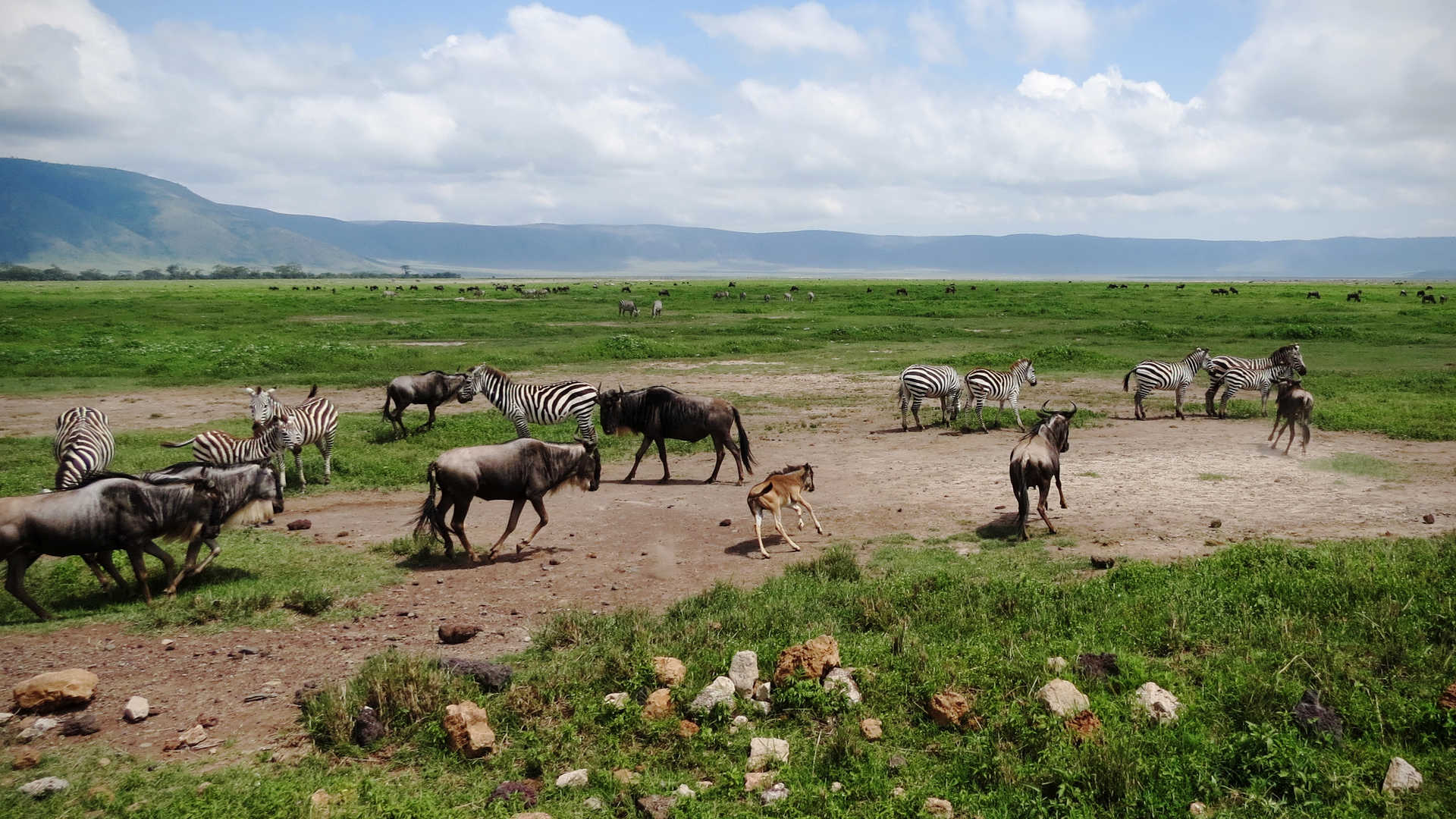Ngorongoro Crater
Entry to the Crater is tightly controlled and it is only open from 06h00 to 16h00 and only 6 hour safari permits are issued. This allows for only a single 6 hour morning game drive or 6 hour afternoon game drive to the park. If you want to go for longer you have to buy two permits.
The crater itself covers over 265sq km but the whole of the Ngorongoro Conservation area is a massive 8000sq km so if you have the time there is so much more to do than visit the crater. Popular places for an extended visit are Olduvai Gorge, where Dr. Louis Leakey discovered the remains of Homo Hablis or “handy man”, regarded as mankind’s first step on the ladder of human evolution, and Lake Eyasi where you can go out on a hunting expedition with the local tribesmen.
The Serengeti
But this fabulous park is most famous as the backdrop to one of the world's most amazing wildlife spectacles, the Great Migration. Up to two million wildebeest accompanied by huge herds of zebra move slowly but purposefully in a clockwise circle around the Serengeti each year following the seasonal rains and the dramatic explosion of grass the rains bring. The wildebeest and zebra together form a living river sometimes more than 40 kilometres long. And where the herbivores lead the predators follow so large prides of lions, cheetah and hyena are all here to be seen. Depending on the timing of your planned trip we can advise on the best itinerary to view the migration. As well as a private trip in your own 4x4, in the Serengeti we can also offer you the chance to experience a Balloon Safari, simply the most amazing way to view game.
Tarangire
Tarangire is one of Tanazania's smaller parks but during the dry season, from June to October it attracts incredible concentrations of wildlife. During this period, the Tarangire river provides the only permanent water in the area and so all of the the animals in the southern Masailand in Tanzania make a bee-line here as the summer temperatures soar. Add in the fact that Tarangire draws less visitors than its more famous neighbours at Ngorongoro and the Serengeti and you have all you need for some great safari viewing. The park also contains some of the largest elephant herds in Tanzania and is home to three rare species of animals – the Greater Kudu, the Fringed-eared Oryx, as well as a few Ashy Starlings.
Lake Manyara
Lake Manyara National Park is one of Tanzania’s most beautiful parks nestled between a shallow soda lake (covering two-thirds of the park) and the Great Rift Valley’s western escarpment. Along this thin stretch there is a wide variety of habitats, from groundwater forests, to swampy delta, acacia woodlands and a small grassy plain. This varied habitat is then home to a wide variety of wildlife animals, including one of Africa’s largest concentrations of elephants and large flocks of flamingos.
A particular highlight of Lake Manyara are the tree climbing lions. This is one of the few places in Africa where full grown lions regularly take to the acacia trees to lounge in the shade. And a tree full of lions is a fabulous sight!










